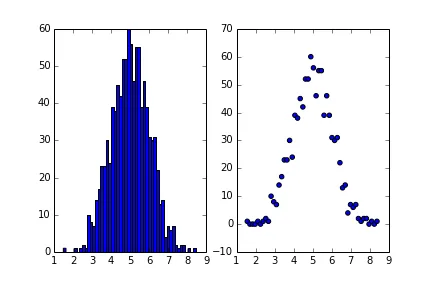我想绘制一个类似于这个的散点图:

我已经可以从我的数据中绘制出直方图,但我希望能够用同样的数据绘制散点图。是否有一种方法可以使用hist()方法的输出作为scatter plot的输入?或者在matplotlib中使用hist()方法绘制scatter plot的其他方法?
用于绘制直方图的代码如下:
data = get_data()
plt.figure(figsize=(7,4))
ax = plt.subplots()
plt.hist(data,histtype='bar',bins = 100,log=True)
plt.show()
